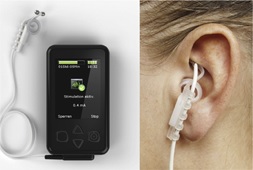Transcutaneous auricular vagus nerve stimulation for post-stroke depression
Kristen Sparrow • March 23, 2024

 I’m not surprised that TAVNS is effective for depression following stroke. I’ve seen how effective it can be for mood disorders, and if you consider the link between the autonomic nervous system and inflammation, and how inflammation is tightly linked to depression, it makes sense.
I’m not surprised that TAVNS is effective for depression following stroke. I’ve seen how effective it can be for mood disorders, and if you consider the link between the autonomic nervous system and inflammation, and how inflammation is tightly linked to depression, it makes sense.
Transcutaneous auricular vagus nerve stimulation for post-stroke depression: A double-blind, randomized, placebo-controlled trial
, , , , , , ,
Highlights
- •
Rehabilitation therapy ta-VNS is a non-pharmacological neuromodulatory treatment option for PSD.
- •
ta-VNS, in combination with neurorehabilitation nursing, was markedly more effective in ameliorating PSD than routine neurological care alone.
- •
The synergistic approach of combining ta-VNS with conventional treatment has demonstrated remarkable efficacy and tolerability in managing depression following a stroke.
-
Background
It is a well-established fact that post-stroke depression (PSD) is a prevalent condition that affects a significant proportion of individuals who have suffered a stroke. Hence, our research endeavors to explore the safety, efficacy and the potential molecular mechanism of transcutaneous auricular vagus nerve stimulation (ta-VNS) for the treatment of depression in PSD patients by conducting a double-blind, sham-controlled, randomized trial.
Methods
Patients who had experienced strokes and exhibited depressive symptoms, with a Hamilton Depression Scale (HAMD-17) score of ≥8 and met the DSM-IV criteria, were diagnosed with PSD. A volunteer sample of participants (N = 80) were randomly divided into either the ta-VNS group (which received ta-VNS in addition to conventional treatment) or the control group (which received conventional treatment only), in a 1:1 ratio. The effectiveness of the interventions was evaluated using the 17-item Hamilton Rating Scale for Depression (HAMD-17), Zung Self-Rating Depression Scale (SDS), and Barthel Index (BI) scores. Furthermore, Plasma BDNF, CREB1, and 5-HT levels were measured before and after treatment.
Results
The concomitant application of ta-VNS demonstrated a remarkable reduction in HAMD-17 and SDS scores, leading to noteworthy enhancements in patients’ daily functioning, as evidenced by improved activities of daily living, at all assessed time points, in contrast to the control group (p < 0.0001). Notably, the ta-VNS group exhibited superior effects in modulating the measured neurotrophic biomarkers when compared to the control group (p < 0.05).
Conclusions
The synergistic approach of combining ta-VNS with conventional treatment has demonstrated remarkable efficacy and tolerability in managing depression following a stroke.

